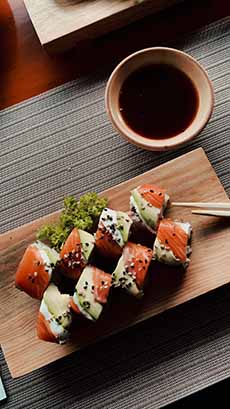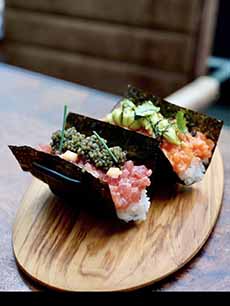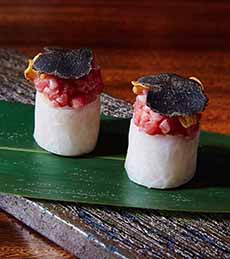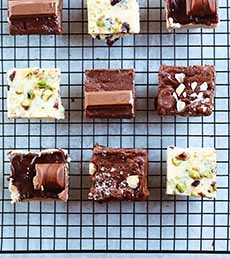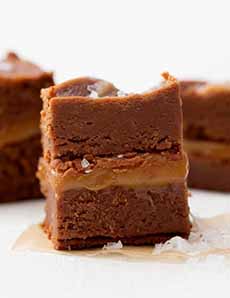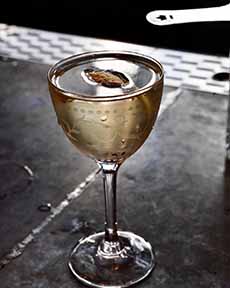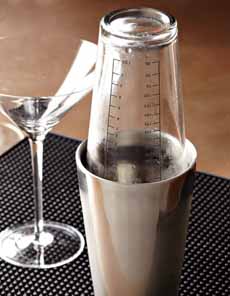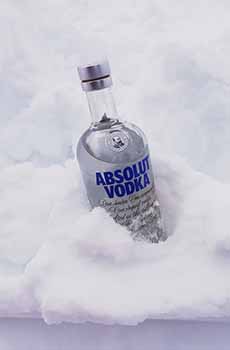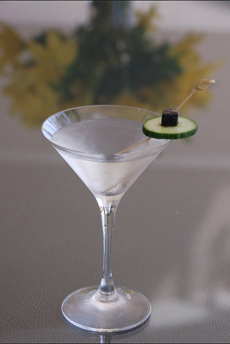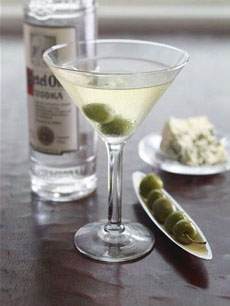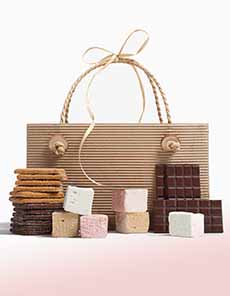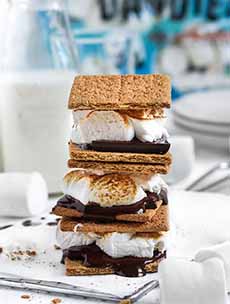|
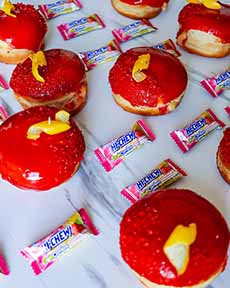
[1] What a treat: artisan doughnuts from The Doughnut Project, with two fillings inspired by HI-CHEW flavors (photos #1, #2, #3 and #4 © Morinaga America).

[2] A side view of the glazed doughnuts.
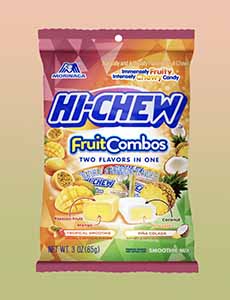
[3] Enjoy the fruit chew, which dissolves in your mouth.
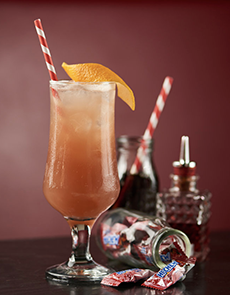
[4] Who knew: You can make cocktails with HI-CHEW candy. Check out these recipes.
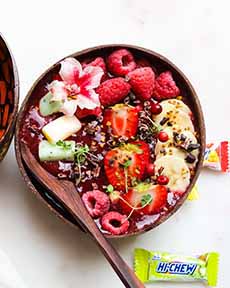
[5] This creative cook added HI-CHEW candies to her smoothie bowl. Here’s the recipe (photo © Lindsey Eats LA).
|
|
June is National Candy Month, and there’s more than one way to enjoy your favorite candy.
Make s’mores with your favorite chocolate bar.
Top an ice cream sundae with M&Ms.
Chop peppermint patties and mix them into yogurt or ice cream.
And now: turn them into filling for doughnuts. That’s what HI-CHEW did.
THE DOUGHNUT PROJECT X HI-CHEW
The immensely fruity, intensely chewy candy brand teamed up with New York City’s The Doughnut Project to celebrate their pouch of Fruit Combos (photo #3).
The result: Strawberry Squeeze, a one-of-a-kind doughnut that highlights the latest HI-CHEW flavor, Strawberry Lemonade (photos #1 and #2).
The doughnut creation is available for a limited time:
Thursday, June 17th through Saturday, June 19th at The Doughnut Project’s West Village location (10 Morton Street, New York City).
The first 10 customers to purchase a Strawberry Squeeze doughnut each day will receive a free HI-CHEW Fruit Combos Standup Pouch.
Pouch notwithstanding, these doughnuts are a real treat, filled with two different pockets of creamy fruit flavors that comprise Strawberry Lemonade:
Lemon curd
Strawberry jam
There’s a sweet lemon curl on top.
If you love a doughnut with one filling, imagine the thrill of two!
Covered with a red glaze, they are works of art!
And may we say…DEE-licious!
Where there is candy, there is happiness. Where there are doughnuts, there are equal happiness, too.
So even if you can’t get to The Doughnut Project to buy some, and don’t have the chops to make your own filled doughnuts (join the club!), think of ways to include HI-CHEW in your other foods.
MORE WAYS TO ENJOY HI-CHEW
Berry Smoothie Bowl With HI-CHEW
Bouquet Cake With HI-CHEW Flowers
Cocktails with HI-CHEW
Spicy Margarita With HI-CHEW
How HI-CHEW is made (video)
> THE HISTORY OF DOUGHNUTS & THE DOUGHNUT-DONUT DIFFERENCE
ABOUT HI-CHEW
Earlier this year, HI-CHEW launched a new Fruit Combos Standup Pouch, featuring individually wrapped Tropical Smoothie, Piña Colada and new Strawberry Lemonade. As the winner of the 2020 HI-CHEW Fantasy Flavor Games, Strawberry Lemonade continues to grow in fanfare and excitement.
The history of Morinaga, the manufacturer of HI-CHEW, stretches back more than a century when company founder Taichiro Morinaga brought his candy making skills to Japan from Americas. HI-CHEW has long been the best-selling soft candy in Japan.
And then, the chewy candy came to the U.S. It’s currently offered in Açaí, Apple, Banana, Grape, Green Mango, Kiwi, Sweet & Sour Watermelon and Strawberry.
Other flavors are available in combo bags:
Berry Mix with Black Cherry, Blueberry and Raspberry
Plus Fruit with Orange & Tangerine and Red Apple & Strawberry
Superfruit Mix with Açaí, Kiwi and Dragon Fruit
Sweet & Sour Mix with Grapefruit, Lemon and Watermelon
Fruit Combos Mix with Tropical Smoothie, Piña Colada and new Strawberry Lemonade
Tropical Mix with Kiwi, Mango and Pineapple
Soda Pop Mix with Cola and Ramune (tastes like white soda)
HI-CHEW is made with concentrated fruit juices and is 100% free of gluten, cholesterol and synthetic colors. The brand continues to expand, offering new fruity, chewy flavor annually.
Discover more at HI-CHEW.com.
ABOUT THE DOUGHNUT PROJECT
The Doughnut Project is a small-batch, handcrafted doughnut shop located in the West Village of Manhattan. The shop creates unique flavors inspired by the amazing foods and creative cocktails of New York City.
The doughnuts have glazes, fillings, and toppings that include out-of-the-box ingredients such as bacon, beets, olive oil, ricotta cheese, sesame seeds, black pepper and sea salt. The shop creates new intriguing flavor profiles on a regular basis and sells out daily.
Check out The Doughnut Project.
|
